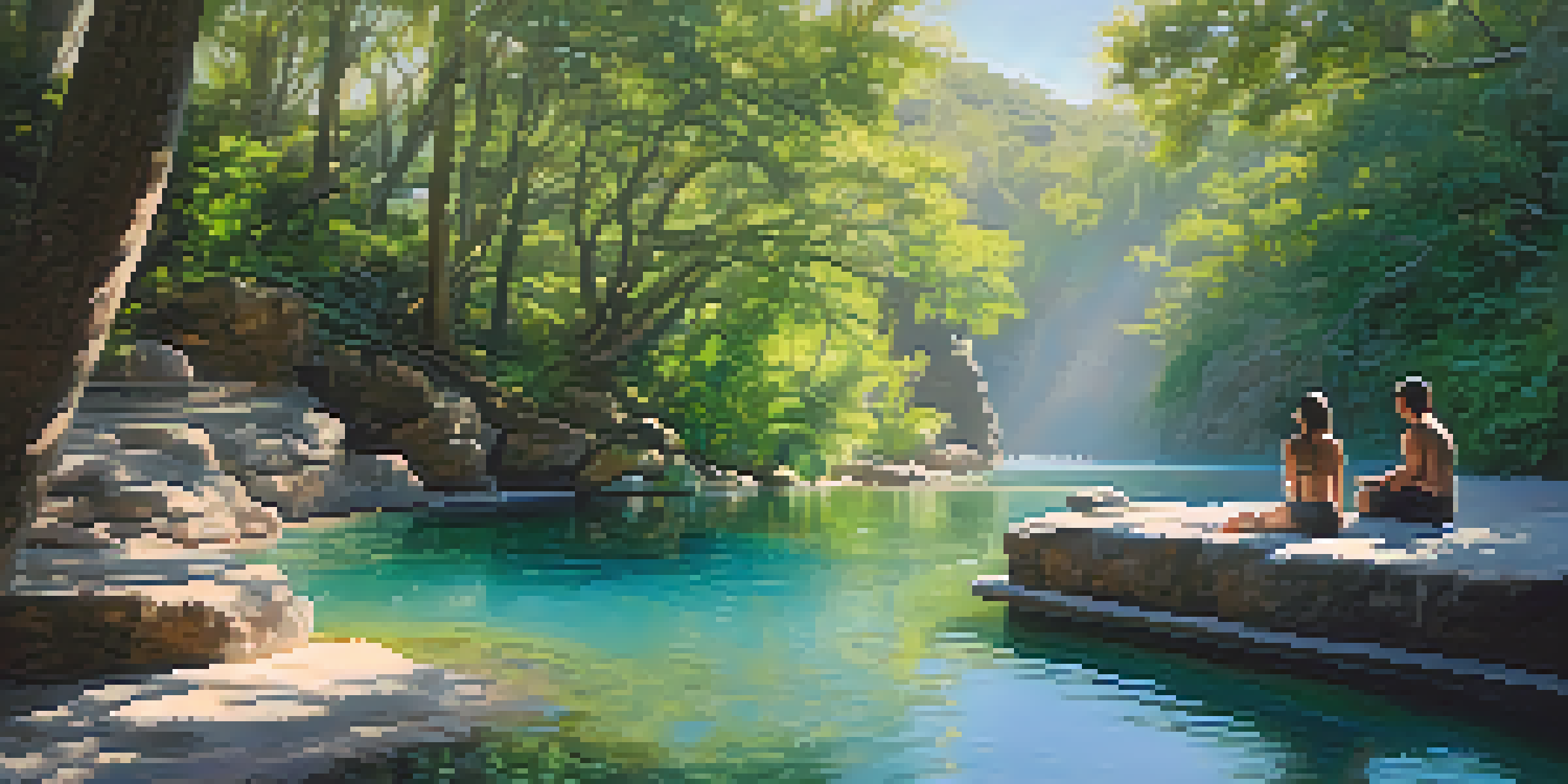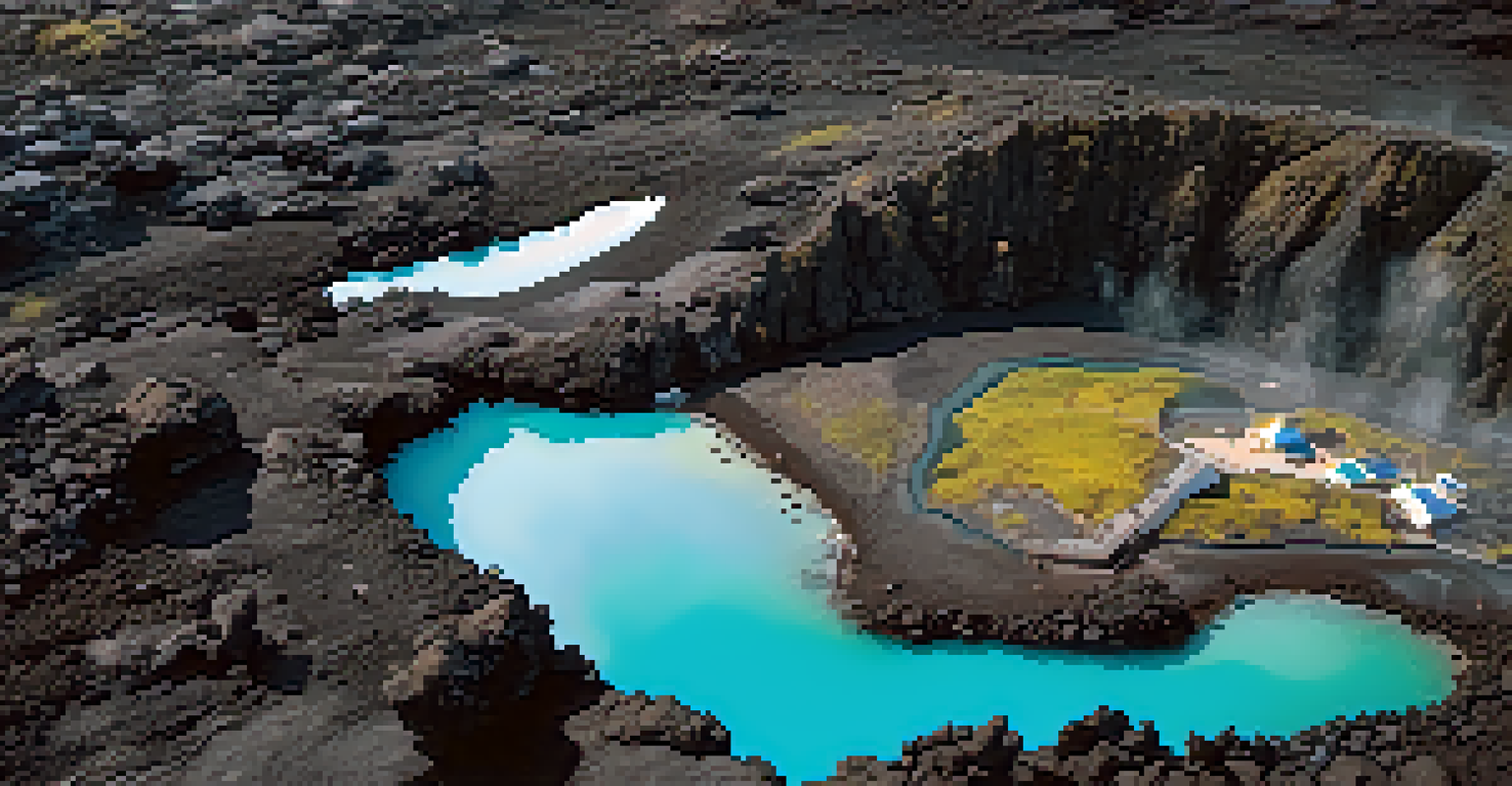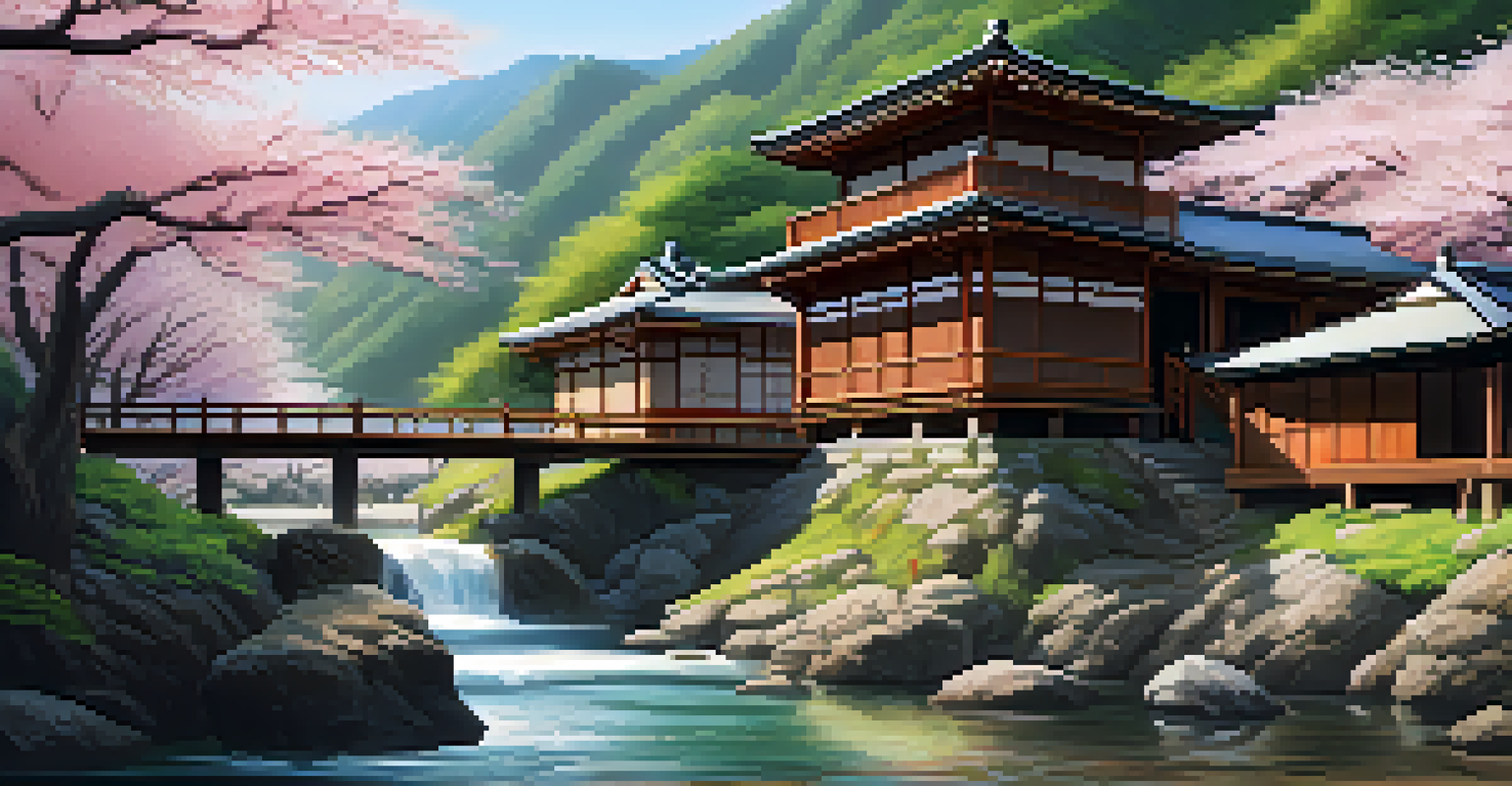Thermal Springs: Natural Hot Springs for Relaxation

What Are Thermal Springs and How Do They Form?
Thermal springs, often referred to as hot springs, are natural bodies of water that have been heated by geothermal activity beneath the Earth’s surface. They typically emerge at the surface due to the pressure and heat from molten rock, resulting in water temperatures that can range from warm to scalding hot. This unique geological phenomenon can occur in various locations worldwide, often where tectonic plates meet or volcanic activity is present.
Nature does not hurry, yet everything is accomplished.
The mineral content of thermal springs can vary significantly, with some containing beneficial elements like sulfur, calcium, and magnesium. These minerals are believed to contribute to the therapeutic properties of the water, making them popular destinations for relaxation and healing. Imagine soaking in a warm bath, surrounded by nature, while your body absorbs these natural minerals—it’s a rejuvenating experience that many seek out.
In addition to their unique formation, thermal springs often create stunning landscapes. From the bright blue waters of geothermal pools to the steam rising in the cool air, these natural wonders attract visitors for both their beauty and healing properties. Understanding how these springs form helps us appreciate their significance in our wellness journeys.
Health Benefits of Soaking in Thermal Springs
One of the primary reasons people flock to thermal springs is for their health benefits. Soaking in hot water can improve circulation, relieve muscle tension, and reduce joint pain, making it an effective remedy for various ailments. Many visitors report feeling relaxed and rejuvenated after spending time in these natural hot tubs, which can be a powerful form of therapy.

The minerals found in thermal springs are also thought to provide additional health benefits. For instance, sulfur is known for its anti-inflammatory properties, which can help alleviate skin conditions like eczema or psoriasis. Similarly, magnesium can promote relaxation and reduce anxiety, making the experience not only physically soothing but mentally calming as well.
Healing Benefits of Thermal Springs
Soaking in thermal springs can relieve muscle tension, improve circulation, and provide therapeutic minerals for overall wellness.
Moreover, the act of soaking in warm water can have a psychological impact, promoting mindfulness and a sense of serenity. Picture yourself unwinding in a thermal spring, surrounded by the sounds of nature—this tranquil environment can enhance your overall well-being and invite a sense of peace into your life.
Popular Thermal Springs Around the World
There are countless thermal springs around the globe, each offering unique experiences. For instance, the Blue Lagoon in Iceland is famous for its striking blue waters and silica mud, attracting visitors eager for both relaxation and skincare benefits. This natural wonder is set against a backdrop of a rugged lava field, creating a stunning contrast that enhances the experience.
The earth has music for those who listen.
Another notable destination is Japan's onsens, which are traditional hot springs that often incorporate natural elements and cultural practices. Visiting an onsen is not just about soaking in warm water; it’s also an opportunity to immerse oneself in Japanese culture and hospitality. Many onsens are located in serene mountain settings, offering a peaceful escape from daily life.
Closer to home, the hot springs of Colorado, such as those found in Glenwood Springs, provide a beautiful combination of relaxation and adventure. Here, visitors can enjoy outdoor activities like hiking or skiing before unwinding in the soothing waters. Each of these thermal spring locations showcases the diverse ways people can connect with nature and enhance their well-being.
Tips for Enjoying Your Visit to Thermal Springs
When visiting thermal springs, it’s essential to plan ahead to make the most of your experience. Be sure to check the temperature of the water; some springs can be hotter than expected. If you’re sensitive to heat, start with shorter soaks and gradually increase your time in the water. Listening to your body is key to enjoying the benefits without overwhelming yourself.
Bringing the right gear can also enhance your visit. A comfortable swimsuit, flip-flops, and a towel are must-haves, but consider packing a water bottle to stay hydrated. The combination of heat and relaxation can sometimes lead to dehydration, so it's wise to sip water throughout your visit. Additionally, a waterproof bag for your belongings can help keep things dry while you're enjoying the spring.
Explore Global Hot Spring Destinations
Popular thermal springs like Iceland's Blue Lagoon and Japan's onsens offer unique experiences that blend relaxation with cultural immersion.
Lastly, take a moment to immerse yourself in the surroundings. Whether it's the sound of bubbling water, the rustle of leaves, or the warmth of the sun on your skin, embrace the natural beauty around you. Engaging your senses can deepen the relaxation experience, allowing you to fully appreciate the therapeutic qualities of thermal springs.
Cultural Significance of Thermal Springs
Throughout history, thermal springs have held cultural significance in many societies. In ancient Rome, for instance, public baths were not just places for hygiene; they served as social hubs where people gathered to relax and converse. This tradition of communal bathing continues in various cultures today, highlighting the social aspect of visiting hot springs.
In many Indigenous cultures, thermal springs are revered for their healing properties and spiritual significance. These natural sites are often associated with rituals and practices that honor the earth and its resources. By visiting these springs, individuals can connect with the cultural heritage and traditions that have been passed down through generations.
Understanding the cultural context of thermal springs enriches the experience for visitors. It encourages a deeper appreciation for the land and the people who have long cherished these natural wonders. Engaging with the history and customs surrounding thermal springs can transform a simple soak into a meaningful journey.
Environmental Considerations and Respect
While enjoying thermal springs, it’s crucial to be aware of our environmental impact. Many hot springs are located in delicate ecosystems, and human activities can disrupt these natural habitats. Simple actions, like staying on marked paths and avoiding littering, can go a long way in preserving the beauty and integrity of these sites for future generations.
It's also important to respect the cultural significance of thermal springs. In some regions, these natural resources are sacred, and visitors should approach them with mindfulness and reverence. Following local guidelines and learning about the customs associated with these sites can enhance your experience while honoring the traditions of the communities that hold them dear.
Respect Nature and Local Cultures
Being mindful of environmental impact and cultural significance enhances the experience of visiting thermal springs while preserving them for future generations.
By practicing environmental stewardship and cultural respect, we can ensure that thermal springs remain a source of relaxation and healing for years to come. Each visit can be an opportunity to promote sustainable tourism and foster a deeper connection with nature.
Planning Your Perfect Thermal Springs Getaway
If you're considering a trip to thermal springs, start by researching locations that fit your preferences. Whether you’re looking for a luxurious spa experience or a rustic natural setting, there’s a thermal spring for everyone. Consider the amenities available, such as lodging, dining options, and spa treatments, to tailor your getaway to your desires.
Timing is also essential when planning your visit. Some springs may be more crowded during peak tourist seasons, so consider visiting during off-peak times for a more tranquil experience. Early mornings or weekdays can provide a quieter atmosphere, allowing you to fully immerse yourself in relaxation without the hustle and bustle.

Lastly, don’t forget to plan for other activities in the area. Many thermal springs are located near hiking trails, scenic viewpoints, or cultural attractions. Combining your visit with outdoor adventures or local experiences can create a well-rounded getaway that rejuvenates both body and spirit.